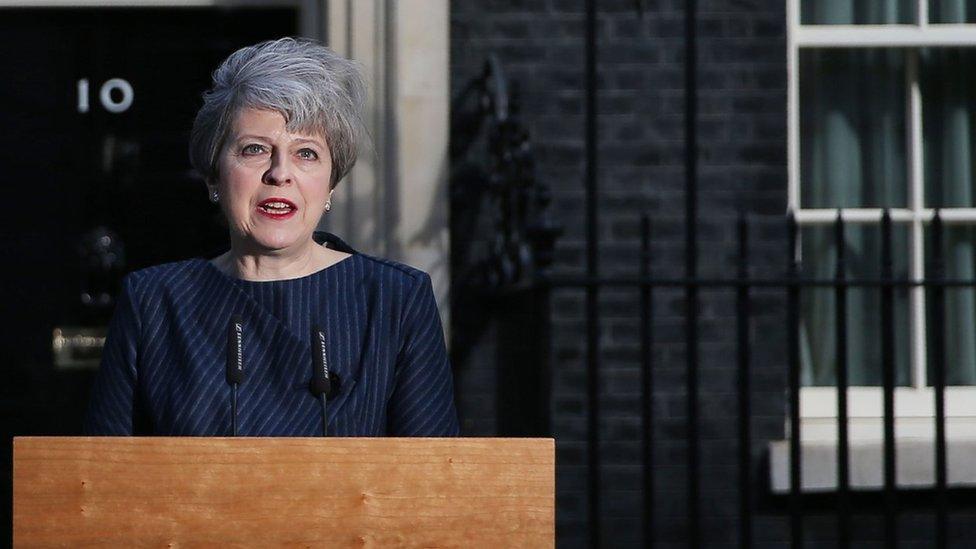Seats that could shape Wales' general election
- Published
On 8 June voters in Wales will head to the polls to decide who will represent them in the 40 constituencies.
Like any election, there will be some seats that will prove more crucial than others - some that are safer for sitting candidates than parts of Wales where there is a genuine contest.
These are five seats which could reflect major shifts in the electorate and tell the story of this year's snap poll.

Bridgend
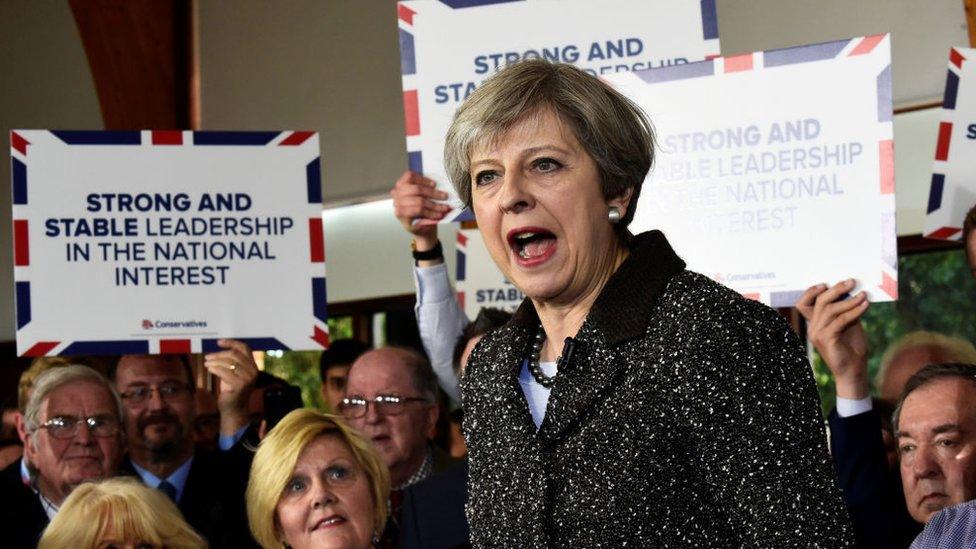
Prime Minister Theresa May visited Bridgend in April
This is Labour First Minister Carwyn Jones's back yard.
And in April, Theresa May came here and parked her metaphorical tank on it.
It was a statement of how ambitious the Conservative campaign is - this seat has not been blue since the 1980s.
Labour is defending a majority of 1,927.
If UKIP's vote vanished - it was 5,911 in 2015 - and switched to the Conservatives, the Tory candidate could be well placed to snatch it.
It is one of several Labour-held marginal seats that could be vulnerable in South Wales. The margins are different, but Newport West, Cardiff West and Cardiff South and Penarth are similar battlegrounds.
BBC Welsh affairs editor Vaughan Roderick said the main battlegrounds this year are areas that have been mainly Labour since the late 1980s but which the Conservatives won in 1983, such as Bridgend.
"You've also got ones that the Tories just failed to win in 1983 which are also on the table," he said. "Those are your Cardiff Souths and your Wrexhams," he said.
"There are the normally safe Labour seats that would be regarded as two-way marginals."
"The battleground has moved deeper and deeper into Labour territory over the years," he said.
"Back a couple of elections, the battleground included both Pembrokeshire seats, Monmouth, and Clwyd West.
But he says "there are a host of other battleground seats that really seem to be off the table now".

Gower

The Gower constituency includes Rhossili
This is the most marginal seat in the UK.
On paper this is one seat that Labour could get back.
A seat it held for more than 100 years, but lost in 2015 by a whisker to the Conservatives with just 27 votes in it.
The swing away from Labour in the opinion polls could make that a tougher proposition, even if the party addresses complaints that it took the constituency for granted two years ago.
But if Labour is successful both here and in the tight Tory/Labour marginal of Vale of Clwyd could Labour activists be breathing a major sigh of relief that this election was not as bad for their party as the pundits predicted?

Cardiff Central
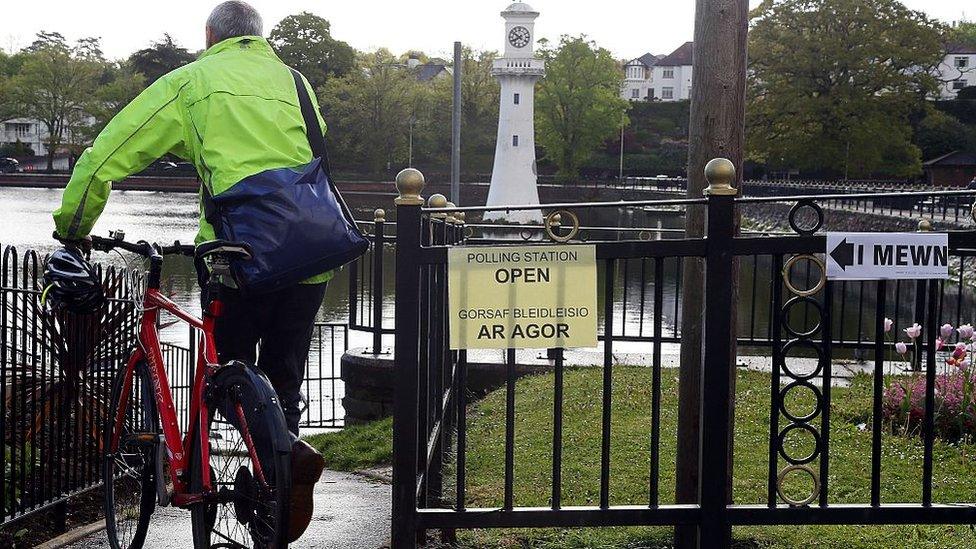
Voting in Roath Park - part of the Cardiff Central constituency
In 2015 the Liberal Democrats had a terrible election. They saw major losses across the UK while their share of Welsh MPs fell from three seats to one.
The pro-EU party is now pinning its hopes on capitalising on the concerns of Remain voters following the referendum.
In Wales, its best bet for that strategy is Cardiff Central. It is, on paper, a marginal that Labour took from the Lib Dems in 2015 with a majority of 4,981.
But could this seat frustrate Lib Dem hopes, with more Tory-inclined voters peeling away from the party and backing a Conservative candidate?
If it does, this could become an example of a three-way marginal seats in Wales, and that could benefit of Labour.
Vaughan Roderick said, on the basis of the local elections, Cardiff Central is "going to be difficult".
"You've got a whole pile of Tory voters who, in normal times ,vote tactically for the Lib Dems," he said.
"If your message is, we're the party of Remain, why should your blue-rinse Tory in Cyncoed vote Lib Dem to keep Labour out?"

Clwyd South
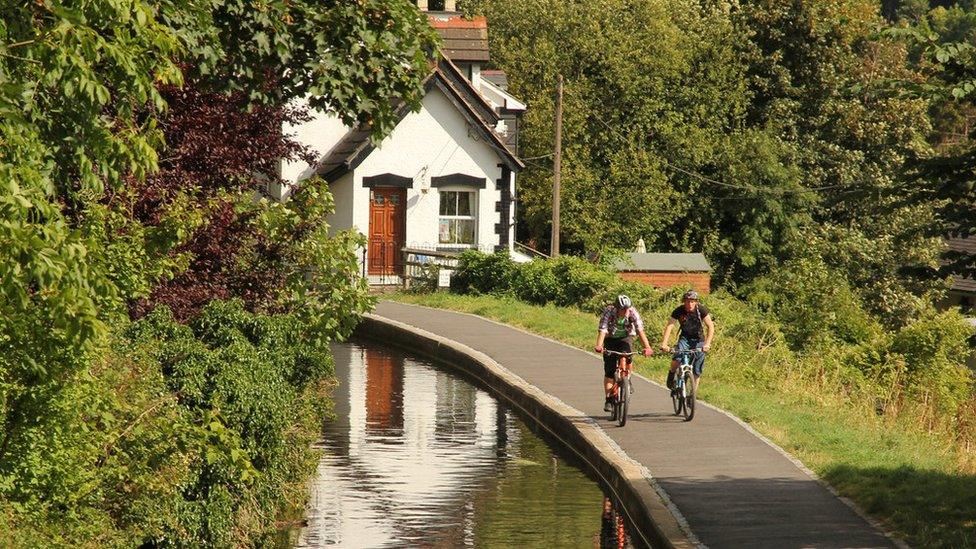
The Conservatives have been strongly tipped to make further inroads into north Wales since gaining Vale of Clwyd at the 2015 general election.
There are a cluster of Labour/Tory marginals here - Alyn and Deeside, Wrexham and Delyn as well as Clwyd South - but Tory hopes of snatching these seats in the assembly election last year were dashed.
Politics has since changed - we have a new prime minister and we have Brexit.
So could the new landscape change the political colours of north east Wales?

Ynys Mon
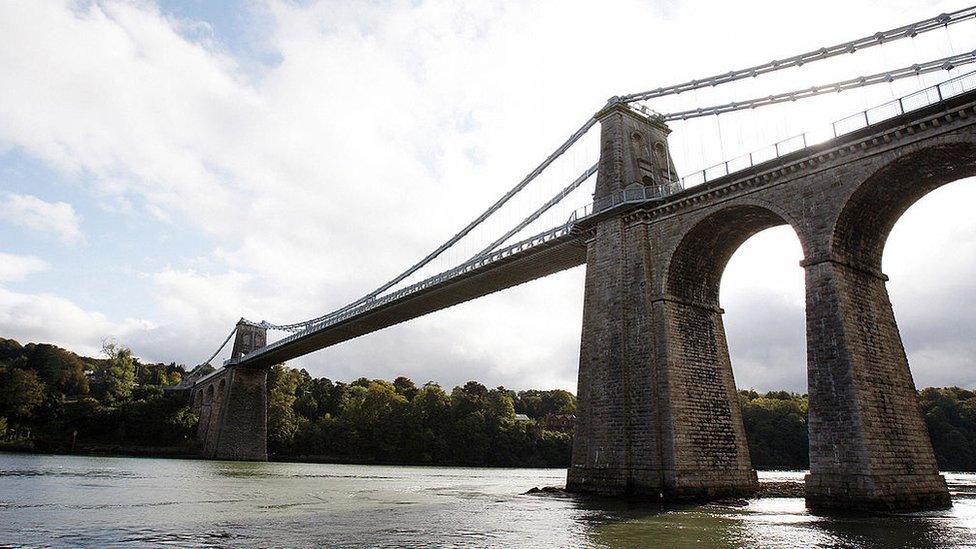
Could Ynys Mon be Plaid Cymru's best hope?
At the start of the general election campaign it was Rhondda where it was thought a senior Plaid Cymru party figure might make a run for Westminster.
After not exactly stopping the speculation for several days, party leader Leanne Wood decided she would not go for the seat.
Instead, the big headline selection for the party was on the Isle of Anglesey, where former leader Ieuan Wyn Jones has put his hat in the ring for the constituency of Ynys Mon.
In 2015 Plaid fell just short of gaining the seat from Labour by 229 votes.
In an election dominated by accusations between the two main UK parties, can Plaid prevent a squeeze on smaller parties and make gains?
The constituency, Vaughan Roderick says, is probably Plaid's best hope.
"You've got a funny little set of seats which involve parties other than Labour and the Tories, which were two-way marginals last time, which could become three-way marginals this time," he said.
"There are three of those - Ynys Mon, Ceredigion and Cardiff Central," he said.
"An upsurge in the Tory vote there could have odd impacts on who ends up winning. They are seats where you might win on 30% of the vote."
We should keep one eye on Rhondda, too.
Even though Leanne Wood is not running, can Plaid replicate its major success story of the assembly election last year?
- Published9 May 2017

- Published18 April 2017
